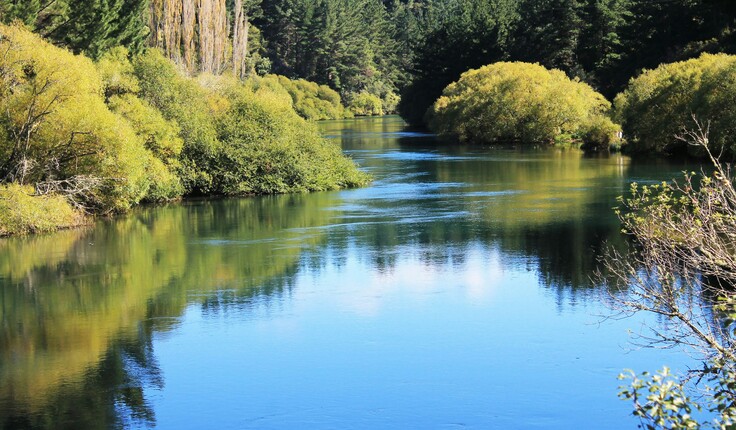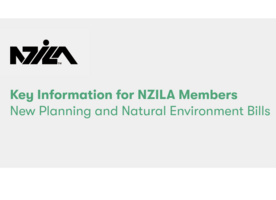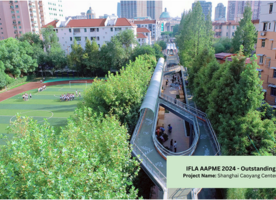News
New Zealand needs to confront the challenges of land use change
Posted 26 06 2024
in News

Parliamentary Commissioner for the Environment
How do we respond to the environmental challenges of climate change, biodiversity loss and water quality while looking after the economic, social and cultural life of our regions?
This is the pressing question addressed in a new report released by the Parliamentary Commissioner for the Environment.
Going with the grain: Changing land uses to fit a changing landscape sets out the multiple environmental problems facing rural New Zealand and makes suggestions on how to approach the land use change needed to prevent further degradation.
“For too long, the issue of land use change has been relegated to the too-hard basket. As a nation we must confront the difficult questions, weigh the trade-offs involved and take action,” the Commissioner, Simon Upton, says.
The report acknowledges that land use change will inevitably involve difficult decisions and trade-offs between environmental, economic and social priorities. The Commissioner draws on six years of research to outline a different kind of process to help central, regional and local government and communities with decision making.
“We have to decide where responsibility lies and who pays. Inaction means the environment bears the costs. If we want to avoid that, we have to be upfront about who foots the bill for land use change. That is as much about the viability of communities and the profitability of farmers as it is about the environment,” the Commissioner explains.
“Land use change cannot be avoided, if only because current policies – particularly those allowing for forestry offsetting through the New Zealand Emissions Trading Scheme (NZ ETS) – are actively encouraging it. A warming climate will accelerate these changes.”
In Going with the grain the Commissioner identifies four critical problems and outlines practical suggestions for how to manage land use change.
The four critical problems are:
- while improved management practices will be enough to meet environmental bottom lines in some places, in others wholesale land use change will be necessary
- climate change itself will compel land use changes in some region
- the current policy, regulatory and funding landscape is complex and fragmented
- many of the environmental impacts of land use are difficult to measure, do not respect property boundaries and make attribution challenging.
His key recommendations are:
- We must take an integrated approach to environmental management that focuses on the catchment rather than individual properties. This will make it easier to understand how environmental policies on water, climate, and biodiversity interact.
- We need to rethink the roles of central government, regional councils and communities in decision making and involve catchment groups more in environmental management.
- Central government must enable farmers and regulators access to inexpensive, high-quality environmental information and underwrite it as a public good.
- Alternative financial tools can help fund land use transitions. The report discusses examples such as loans and grants, resource rentals on the commercial use of water and pricing biogenic methane emissions.
- The costs of a successful transition would be lower if we removed barriers that are impeding progress, such as, progressively removing forestry from the NZ ETS and creating a separate mechanism (or emissions trading scheme) to manage biogenic methane emissions.
In a companion report released concurrently, the Commissioner has investigated how both current and alternative approaches to environmental policy could affect land use change in the Mataura catchment in Murihiku Southland and the Wairoa catchment in Te Tai Tokerau Northland.
Entitled, Exploring land use change under different policy settings in two case study catchments, the report details how different approaches might work in practice.
The Commissioner says the findings were confronting.
“Our modelling projected the emergence of dual monocultures of dairying and pine production forestry in both catchments, with the starkest impacts evident in Wairoa.
“Scenarios based on alternative policy mixes generated less extreme, but still challenging outcomes. However, they produced a greater diversity of land uses, which provided a more resilient local community, economy and environment.”
The Commissioner emphasises that these findings cannot be extrapolated to other catchments. “They simply show us the scale of change that is possible. They also reinforce the fact that one-size-fits-all environmental regulation will produce very different outcomes in different places. To avoid that, we need to take a tailored approach that goes with the grain of landscape in each catchment.”
Related resources
Explore a StoryMap of how land uses are changing
10 Dec
Proposed replacement of the RMA: Planning Bill and Natural Environment Bill

A message from the Environmental Legislation Working Group
On Tuesday this week, the Government released proposed bills to replace the Resource Management Act 1991. Reform of our planning …
03 Dec
Newly Registered Landscape Architects 2025

Celebrating professional achievement across Aotearoa The 2025 Registration process is now nearing completion, and we are delighted to acknowledge the …
02 Dec
2025 IFLA APR Newsletter

November Edition
2025 IFLA APR Newsletter: November Edition November brings exciting updates from across the region. We’re welcoming the new IFLA APR …
Events calendar
Full 2025 calendar